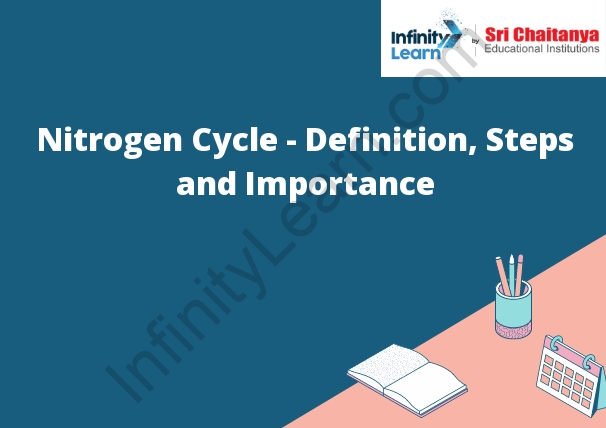Table of Contents
What is the Definition of Nitrogen Cycle?
The nitrogen cycle is the process that recycles nitrogen gas (N2) back into the Earth’s atmosphere. Nitrogen gas makes up 78% of the Earth’s atmosphere and is an essential part of all living things. The nitrogen cycle is made up of five steps:
1. Nitrogen fixation: Nitrogen gas is converted into ammonia (NH3) by certain types of bacteria.
2. Assimilation: Plants use the ammonia to create proteins and other essential molecules.
3. Ammonification: Decomposing plants and animals release ammonia back into the soil.
4. Nitrification: Bacteria convert the ammonia into nitrates (NO3-).
5. Denitrification: Bacteria convert the nitrates back into nitrogen gas, which is released back into the atmosphere.

What is Nitrogen Cycle
The nitrogen cycle is the process that recycles nitrogen gas (N 2 ) into a form that plants and animals can use. Nitrogen gas is a component of the air we breathe and makes up 78% of the Earth’s atmosphere. The nitrogen cycle is important because it helps keep the Earth’s environment healthy.
Nitrogen Cycle Steps
The nitrogen cycle is the process that recycles nitrogen gas (N2) into plant-usable forms of nitrogen. The nitrogen cycle has five steps:
1. Fixation: In the first step, nitrogen gas is converted into ammonia (NH3) or nitrite (NO2-) ions by certain bacteria.
2. Ammonification: In the second step, the ammonia or nitrite ions are converted into ammonium (NH4+) ions by other bacteria.
3. Nitrification: In the third step, the ammonium ions are converted into nitrates (NO3-) ions by still other bacteria.
4. Denitrification: In the fourth step, the nitrates are converted back into nitrogen gas by bacteria in the soil or water.
5. Decomposition: In the fifth and final step, the nitrogen gas is released back into the atmosphere by bacteria that decompose organic matter.
The Nitrogen Cycle in the Marine Ecosystem
The nitrogen cycle is the process that recycles nitrogen in the marine ecosystem. Nitrogen is an essential element for life and is found in all living things. It is used in proteins, DNA, and other molecules.
The nitrogen cycle begins with nitrogen gas (N2) in the atmosphere. Lightning can create nitric oxide (NO) from nitrogen gas. NO is then converted to nitrite (NO2-) by bacteria. Nitrite is then converted to nitrate (NO3-) by other bacteria. Nitrate is then taken up by plants and algae. It is used to make proteins and other molecules.
Animals eat the plants and algae and the nitrogen is transferred to them. The animals then excrete the nitrogen as waste. Some of the nitrogen is lost to the environment when the animals die. Bacteria and other microorganisms convert the waste back to nitrite and nitrate. The nitrogen cycle is then repeated.
Importance of the Nitrogen Cycle
The nitrogen cycle is important because it helps to recycle nitrogen back into the environment. Nitrogen is an important nutrient for plants and is used in the process of photosynthesis. The nitrogen cycle also helps to control the amount of nitrogen in the environment. Too much nitrogen can be harmful to the environment, so the nitrogen cycle helps to keep the levels of nitrogen in check.
Important Points on the Nitrogen Cycle
- The nitrogen cycle is a process that recycles nitrogen from the environment into living things and back into the environment. Nitrogen is an important element in the environment because it is necessary for life. It is found in proteins, DNA, and other molecules in all living things.
- The nitrogen cycle begins with nitrogen gas in the atmosphere. Lightning and thunderstorms create nitric oxide, which combines with oxygen to create nitrogen dioxide. Nitrogen dioxide is a pollutant that is harmful to people and the environment. It is converted into nitric acid in the rain, which falls to the ground and is taken up by plants.
- Plants use nitrogen to make proteins and other molecules. Animals eat the plants and the nitrogen is passed on to them. When animals die, their bodies decompose and the nitrogen is released back into the environment. Bacteria and other microorganisms convert the nitrogen back into nitrogen gas, which completes the cycle.








